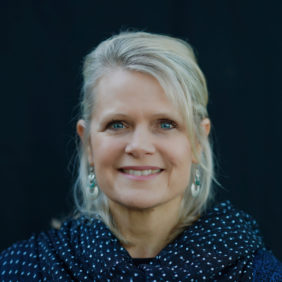How often do you check in to ask how people in your organization are doing? Not the perfunctory, “How are you?” type of greeting, but rather setting aside time for intentional conversations about how people are really doing, what they think they need now, and how they envision their future. More importantly, does your organizational culture allow space for this level of candor and personal vulnerability?
There is a paradigm shift happening which invites all of us to show up as more wholly human at work. Increasingly, employees expect organizations to consider social issues that impact people in and outside of work. This is why I believe “quiet quitting”–only doing work defined by job descriptions during regular office hours–has recently become a popular topic of debate. On one side, there are leaders who believe people simply aren’t sufficiently motivated to work hard anymore, without exercising curiosity as to why employees aren’t extending themselves to go above and beyond. On the other side, people who support and engage in quiet quitting report to us that they are doing so because they are seeking to matter more to their boss and their organization. Instead of saying, “I want me and my work to matter more,” they will use words like, “I want more equity, recognition, flexibility and opportunity in exchange for the value I bring or the energy I expend on your behalf.”
At Kadabra, we often work with clients who engage in quiet quitting due to burnout from chronic overwork and/or disillusionment with their leadership team – and they are sincerely looking for alternative ways to cope. When we zoom out to examine the issue from an organization wide or industry sector wide lens, we can see that quiet quitting is a symptom of one or more chronic challenges related to an outdated social contract between individuals and institutions.
We’ve noticed that the phenomenon of quiet quitting seems particularly acute among mid to senior level leaders who report to either the CEO or another C-level executive.
For example, one of my coaching clients is an experienced senior leader who reports directly to the head of the organization. While they have been expending significant time and effort to support and keep their direct reports fully engaged, they are struggling with chronic overwork to an extent where their mental and physical health is at risk. So far, the head of the organization seems oblivious to the real risk that this person will soon either have to take a leave of absence or exit the organization entirely.
What we used to think of as a mutually understood social contract is being revised to prioritize people first.
For leaders this means learning to lead with greater inclusivity, equity-mindedness, authenticity and trauma-informed approaches. This shift can feel very uncomfortable for traditional leaders who are being invited to reconsider everything they know about leadership. Traditionally, organizations have prioritized hierarchical command and control style leadership models, profits, productivity and strict separation between our personal and professional domains.
We now know that for organizations to be successful in the future they must prioritize differently. Without this shift organizations run the risk of losing valuable talent. When people don’t feel their leaders are willing to “go there” they’re more likely to engage in quiet quitting. This is why checking in with people now is so important as a starting point.
When organizational cultures normalize having real conversations about our lived experiences, needs and goals in and outside of the workplace, people are more likely to remain engaged.
Recently, a vice president at a Fortune 500 financial services provider reached out to ask whether I would consider becoming a formal mentor for one of her high potential employees. The top leadership team has very few women and the organization has been slow to implement culture change. The vice president was concerned that without engaging outside support, this high potential employee would eventually become frustrated by a lack of upward mobility.
In the 2022 Women in the Workplace report released by McKinsey & Company in partnership with LeanIn.Org, more than 40,000 employees were surveyed and interviews were conducted with women of diverse identities to gain an intersectional perspective at biases and barriers in the workplace.
“Women leaders are just as ambitious as men, but at many companies, they face headwinds that signal it will be harder to advance. They’re more likely to experience belittling microaggressions, such as having their judgment questioned or being mistaken for someone more junior. They’re doing more to support employee well-being and foster inclusion, but this critical work is spreading them thin and going mostly unrewarded. And finally, it’s increasingly important to women leaders that they work for companies that prioritize flexibility, employee well-being, and diversity, equity, and inclusion (DEI).”
Here are some practical tips for checking in with people:
- Schedule regular 1-on-1’s to ask how people are doing throughout the year. How often you should schedule them depends on whether they report to you directly, or you have a skip level relationship.
- When you meet, use these questions to help guide your discussion:
- How are they feeling about the work they’re doing?
- What would they like to do in the future?
- How are their families?
- Where do they feel like they need additional support?
- What personal or professional highlights and lowlights have they experienced this quarter/year/month?
- Share the questions above ahead of time so you are both prepared to have a meaningful discussion.
- Kick off the meeting by sharing your answer to one of the questions above. Focus not just on the content or details, but rather on sharing your insights, key learnings and action plan for and what you are working to change going forward as a result of this experience or situation. That way, you can role model being both solution oriented and authentic,
- End your meeting on time and schedule a 15-minute buffer time so you and they aren’t rushing directly into another meeting after yours.
- Follow-up between meetings via email, Slack or text to let them know you are thinking about them and any challenges they’ve shared.
- Remember that when you invite people to share, you are not obligated to ‘fix’ something for them or become their therapist. You can express empathy without taking on their challenges and emotions as your own.
Quiet quitting becomes less prevalent when people feel their individual experiences, needs and goals matter to organizational leaders. This is what it means to lead the Learn Lead Lift Way. Start Putting Learn Lead Lift Into Practice with our free bundle and notice what positive shifts start happening in your organization.


 Heather Leavitt-Martinez (she/her/hers) – Senior Product Manager
Heather Leavitt-Martinez (she/her/hers) – Senior Product Manager Wendy Ryan (she/her/hers) – CEO
Wendy Ryan (she/her/hers) – CEO Shawn Bunger (she/her/hers) – Senior Consultant
Shawn Bunger (she/her/hers) – Senior Consultant Crystal Whiteaker (she/her/hers) – Senior Consultant
Crystal Whiteaker (she/her/hers) – Senior Consultant Gail Finger (she/her/hers) – Senior Consultant
Gail Finger (she/her/hers) – Senior Consultant Monica Silkwood (she/her/hers) – Director of Operations and Experience
Monica Silkwood (she/her/hers) – Director of Operations and Experience Johanna Lyman (she/her or they/them) Senior Consultant
Johanna Lyman (she/her or they/them) Senior Consultant Sherri Horan (she/her/hers) – Senior Consultant
Sherri Horan (she/her/hers) – Senior Consultant